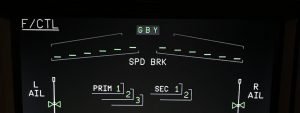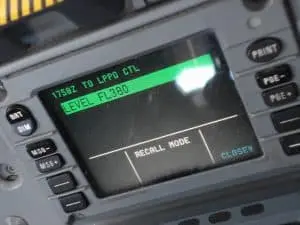A SPECI is a Special Weather Report issued when there is a significant change to a published METAR (Meteorological Terminal Aviation Routine Weather Report).
Table of Contents
What is a METAR?
A METAR is an aviation weather observation reported every 30 minutes or hourly. METARs contain important surface weather information for pilots. Find out how to decode a METAR here.
What information is included in a METAR?
METARs generally include the following information:
- EGLL 011720Z 080/07KT 9999 NCD 24/05 Q1021 NOSIG
- Station: e.g. EGLL (Heathrow International, London)
- Issue time: 011720z The date and the time the METAR was issued in UTC (also known as “Zulu” time) 01st / 1720 UTC
- Wind direction and speed: 080/07KT Wind direction in METARs is in true degrees (i.e. with reference to true north, as opposed to magnetic north). Wind speed is normally issued in knots, but can also be issued in “MPS” (meters per second). In this case the wind is from 080º True, at 7 knots.
- Visibility: 9999 indicates a visibility of “greater than 10KM”, or 10,000 meters.
- Cloud cover: NCD means “No Cloud Detected”
- Temperature and dew point: 24/05 The temperature is reported first (in degree celsius) followed by the dew point (the temperature at which the air would become saturated with water vapor). The dew point is also reported in degrees celsius.
- Sea level pressure: Q1021 This is reported in millibars or inches of mercury. In this case 1021 millibars
What is a SPECI?
A SPECI is a type of METAR that is issued when there has been a significant change to the weather reported in the most recent METAR.
When are SPECIs issued?
A SPECI must be issued when any of the following occurs:
- Wind direction change: When wind direction changes by at least 45 degrees, and the wind speed remains at 10 knots or more.
- Visibility: A change of visibility (either a decrease below, or an increase above) 3, 2 or 1 miles, or the lowest instrument approach procedure minimum (or 1/2 mile if none published).
- RVR: A change in RBR (Runway Visual Range) in the preceding 10 minutes to below 2,400 feet (or if already below, then increases above 2,400 feet).
- Significant weather begins: A SPECI is issued if a Tornado, Funnel Cloud, Waterspout or Thunderstorm begins or ends.
- Signifiant precipitation: A SPECI is issued if Hail, Freezing Precipitation or Ice Pellets begin or end, or if there is a change in the intensity of the Freezing Precipitation or Ice Pellets.
- Squall: A report is issued when wind suddenly increases by at least 16 knots and remains at or above 22 knots for at least one minute.
- Ceiling: A change in ceiling (i.e. broken or overcast cloud) either forms or dissipates at: 3,000 feet, 1,500 feet, 1,000 feet, 500 feet, or the lowest standard instrument approach procedure (if none published, 200 feet).
- Volcanic eruption: when a volcanic eruption is noted.
- Aircraft mishap: when notified of an aircraft mishap.
- Miscellaneous: a SPECI report is issued when a critical meteorological situation has been observed.
Reference: FAA JO 7900.5C Surface Weather Observing Document
Frequently Asked Questions about SPECIs
What is a SPECI?
A SPECI is a special weather report issued when there has been a significant change since a METAR was issued.
When is a SPECI issued?
A SPECI is issued when there has been a significant change from the METAR occurs. Significant changes include changes to wind direction, visibility, weather phenomena, ceiling, an aircraft mishap has occurred or there is safety critical meteorological situation.
Is wind direction in a SPECI in degrees true or magnetic?
Winds in METARs and TAFs are in degrees TRUE.
How long is a SPECI valid for?
SPECIs are actual observations and not forecasts, and as such SPECIs don’t have a validity period.
How do you decode a SPECI?
A SPECI uses the same terminology to decode METARs and TAFs.
Featured image: sky_selia/Unsplash
If you found this article interesting please take 5 seconds to share this on your favorite social media. Thanks so much, I really appreciate it! [email protected]

Pete has been flying aircraft for the last 20 years. He has flown everything from light piston aircraft up to heavy jets as both First Officer and Captain. He’s currently enjoying life flying the Airbus A330 for a major international airline.






